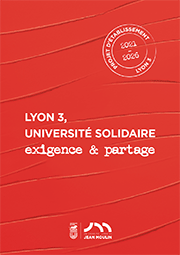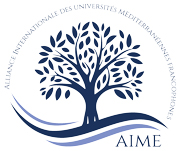AccueilRechercheProgrammes et productions scientifiquesThèsesThèses soutenuesThèses soutenues - 2006-2021Thèses soutenues - 2011
-
Partager cette page
- Recherche,
AIVO Gérard
Le statut de combattant dans les conflits armés non internationaux. Etude critique de droit international humanitaire
Publié le 21 octobre 2011 – Mis à jour le 18 novembre 2024
Thèse en Droit - Droit international et relations internationales soutenue le 14 octobre 2011, en cotutelle avec l'Université de Genève.
Avant les Conventions de Genève de 1949, seuls les conflits armés internationaux étaient réglementés par le droit de la guerre. Ce dernier ne pouvait s’appliquer dans les guerres civiles qu’après la reconnaissance des forces rebelles comme partie belligérante. Or, depuis la Seconde guerre mondiale on a assisté à une multiplication des conflits armés non internationaux. Mais les Conventions de Genève de 1949 leur ont consacré seulement l’article 3 commun ; puis le Protocole II additionnel de 1977 est venu le compléter. Ces deux textes comportent de nombreuses lacunes, notamment l’absence de définition des ? combattants ? et des ? civils ?, rendant ainsi difficile le respect du principe de distinction pourtant essentiel à la protection des populations civiles. Ces dispositions ne réglementent pas non plus les moyens et méthodes de guerre.
Outre les lacunes normatives, il y a des problèmes matériels qui compliquent la mise en ?uvre efficace des règles pertinentes. Il s’agit notamment de la participation des populations civiles aux hostilités, y compris les enfants-soldats et les mercenaires. L’absence du statut de combattant dans les conflits armés non internationaux appara?t comme le problème principal compromettant l’efficacité du DIH. Celle-ci ne contribue-t-elle pas au non respect de ce droit par les groupes armés ? Faudrait-il conférer ce statut à ces derniers en vue de les amener à appliquer le droit international humanitaire ou envisager d’autres moyens ? Lesquels ?
Before the Geneva Conventions of 1949, only the international armed conflicts were regulated by the law of the war. This last one could apply in the civil wars only after the recognition of the rebel forces as belligerent party. Now, since the Second World War we attended an increase in non-international armed conflicts. But the Geneva Conventions of 1949 dedicated them only the common article 3; then the additional Protocol II of 1977 came to complete it. These two texts contain numerous gaps, in particular the absence of definition of the "combatants" and the "civilians", making so difficult the respect for the principle of distinction nevertheless essential for the protection of the civil populations. These rules do not regulate either the means and the war methods.
Besides the normative gaps, there are material problems which complicate the effective implementation of the relevant rules. It is in particular about the participation of the civil populations in the hostilities, including the children-soldiers and the mercenaries. The absence of combatant's status in the non-international armed conflicts appears as the main problem compromising the efficiency of the international humanitarian law. Does not this one contribute to the non compliance with this law by the armed groups? Would it be necessary to confer this status to these last ones to bring them to apply the international humanitarian law or to envisage the other means? Which one?
Mots clés : Accords spéciaux, amnistie, CICR, civil, combattant, Cour pénale internationale, crimes de guerre, droit des conflits armés, enfants-soldats, forces armées, groupes armés, guérilla, mercenaires, ONU, principe de distinction, reconnaissance de belligérance, sociétés militaires privées.
Keywords : Special agreements, amnesty, ICRC, civilian, combatant, International Criminal Court, war crimes, law of the armed conflicts, children-soldiers, armed forces, armed groups, Guerrilla warfare, mercenaries, UN, principle of distinction, Recognition of belligerency, private military companies.
Directeur de thèse : Stéphane DOUMBE-BILLE
Robert KOLB
Membres du jury :
Marco SASSOLI, Professeur, Université de Genève
Stéphane DOUMBE-BILLE, Professeur, Université Jean Moulin Lyon 3
Robert KOLB, Professeur, Université de Genève
Louis BALMOND, Professeur, Université de Nice Sophia Antipolis
Philippe BLACHER, Professeur, Université Jean Moulin Lyon 3
Président du jury : Louis BALMOND
Mention : Très honorable avec les félicitations du jury
Equipe d'accueil : Droit international et comparé
Outre les lacunes normatives, il y a des problèmes matériels qui compliquent la mise en ?uvre efficace des règles pertinentes. Il s’agit notamment de la participation des populations civiles aux hostilités, y compris les enfants-soldats et les mercenaires. L’absence du statut de combattant dans les conflits armés non internationaux appara?t comme le problème principal compromettant l’efficacité du DIH. Celle-ci ne contribue-t-elle pas au non respect de ce droit par les groupes armés ? Faudrait-il conférer ce statut à ces derniers en vue de les amener à appliquer le droit international humanitaire ou envisager d’autres moyens ? Lesquels ?
Before the Geneva Conventions of 1949, only the international armed conflicts were regulated by the law of the war. This last one could apply in the civil wars only after the recognition of the rebel forces as belligerent party. Now, since the Second World War we attended an increase in non-international armed conflicts. But the Geneva Conventions of 1949 dedicated them only the common article 3; then the additional Protocol II of 1977 came to complete it. These two texts contain numerous gaps, in particular the absence of definition of the "combatants" and the "civilians", making so difficult the respect for the principle of distinction nevertheless essential for the protection of the civil populations. These rules do not regulate either the means and the war methods.
Besides the normative gaps, there are material problems which complicate the effective implementation of the relevant rules. It is in particular about the participation of the civil populations in the hostilities, including the children-soldiers and the mercenaries. The absence of combatant's status in the non-international armed conflicts appears as the main problem compromising the efficiency of the international humanitarian law. Does not this one contribute to the non compliance with this law by the armed groups? Would it be necessary to confer this status to these last ones to bring them to apply the international humanitarian law or to envisage the other means? Which one?
Mots clés : Accords spéciaux, amnistie, CICR, civil, combattant, Cour pénale internationale, crimes de guerre, droit des conflits armés, enfants-soldats, forces armées, groupes armés, guérilla, mercenaires, ONU, principe de distinction, reconnaissance de belligérance, sociétés militaires privées.
Keywords : Special agreements, amnesty, ICRC, civilian, combatant, International Criminal Court, war crimes, law of the armed conflicts, children-soldiers, armed forces, armed groups, Guerrilla warfare, mercenaries, UN, principle of distinction, Recognition of belligerency, private military companies.
Directeur de thèse : Stéphane DOUMBE-BILLE
Robert KOLB
Membres du jury :
Marco SASSOLI, Professeur, Université de Genève
Stéphane DOUMBE-BILLE, Professeur, Université Jean Moulin Lyon 3
Robert KOLB, Professeur, Université de Genève
Louis BALMOND, Professeur, Université de Nice Sophia Antipolis
Philippe BLACHER, Professeur, Université Jean Moulin Lyon 3
Président du jury : Louis BALMOND
Mention : Très honorable avec les félicitations du jury
Equipe d'accueil : Droit international et comparé
Documentation
Mise à jour : 18 novembre 2024







